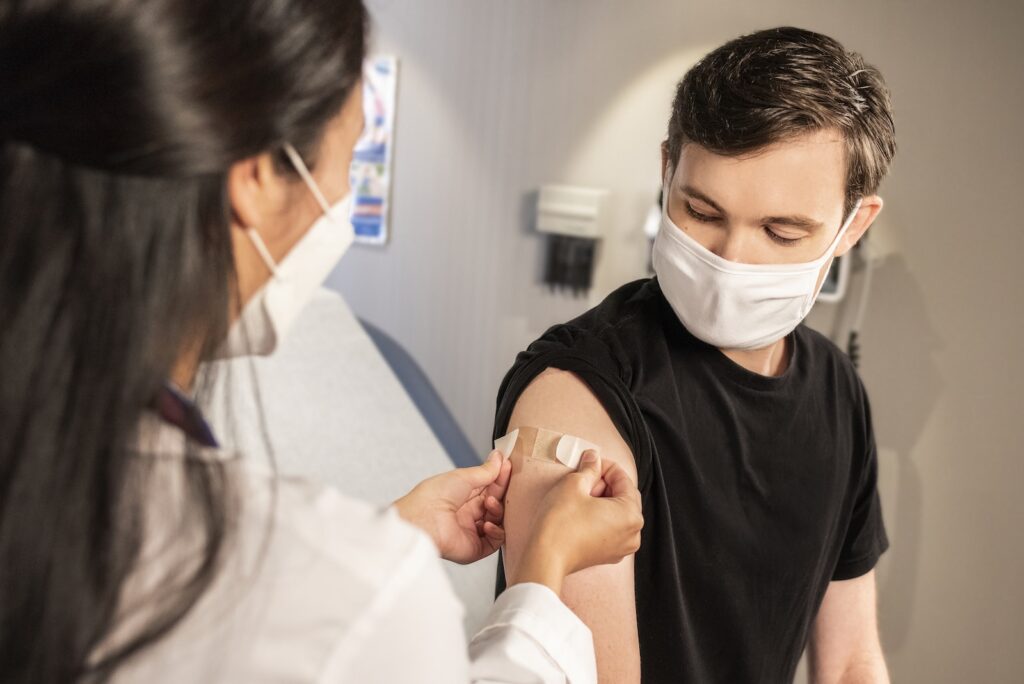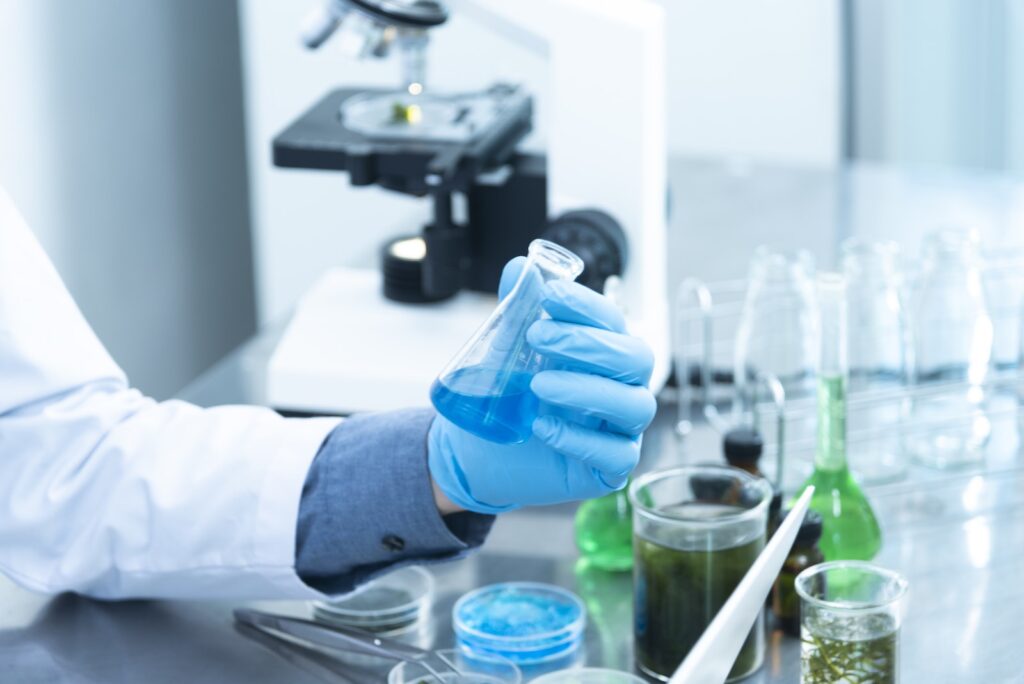Table of Contents
Introduction to Nanotechnology in Medicine
Nanotechnology refers to the manipulation of matter on an atomic, molecular and supramolecular scale. It is a field that involves various disciplines including engineering, physics, chemistry, biology and medicine.
In the past few decades, nanotechnology has emerged as a potential game-changer in medicine. Researchers have found ways to use these tiny particles measuring less than 1/100th the size of a human cell to diagnose diseases at their earliest stages and create more targeted therapies with fewer side effects than conventional treatments.
One of the most promising applications of nanotechnology in medicine is drug delivery. Currently, many drugs can cause harmful side effects when they reach healthy cells due to their non-specific nature. Nanoparticles can be engineered specifically for targeting tumor cells or other affected areas without harming healthy tissue.
Another area where nanomedicine shows significant promise is diagnostics and imaging. Small particles can carry contrast agents capable of enhancing medical images. This enables clinicians to detect smaller cancerous tumors earlier than ever before.
In addition, biosensors using nanoparticles could revolutionize real-time health monitoring allowing patients with chronic conditions such as diabetes or heart disease greater control over managing their illnesses by providing them with constant feedback about changes in essential biomarkers like blood sugar levels.
The advances made so far show that combining nanomaterials with biological systems could help solve some long-standing challenges facing modern healthcare while enabling new opportunities for scientific discovery. If applied properly it has all potentials you make revolutionary breakthroughs not only for diagnosing but also treating challenging diseases which are either incurable or extremely difficult using traditional methods
.
However, this emerging technology comes with its own set of ethical concerns regarding safety issues associated with exposure to nanoparticles during production or disposal. More research is needed to ensure that the implementation of nanomedicine strikes an appropriate balance between progress and safety.
Nanomedicine for Diagnostics and Imaging
One of the greatest benefits of nanotechnology in medicine is its ability to improve diagnostics and imaging. Nanoparticles can be engineered with unique properties that enable them to target specific cells or tissues within the body, making it easier for doctors to detect diseases early on.
For example, iron oxide nanoparticles have been approved by the FDA as a contrast agent for magnetic resonance imaging (MRI). They bind specifically to cancer cells and allow doctors to easily locate tumors without invasive procedures. Similarly, gold nanoparticles functionalized with various biomolecules have been used in optical imaging techniques such as fluorescence microscopy or surface-enhanced Raman spectroscopy (SERS) enabling accurate detection of cancer-related molecules at ultra-low concentrations.
In addition, nanosensors can provide real-time information on changes happening within the body’s molecular composition. Sensing materials could consist outof various particles like carbon nanotubes, Graphene Quantum Dots etc., being integrated into devices detecting biomarkers from patients’ blood / saliva samples which are associated with disease progression or response towards treatment.
Put simply:
“Nanomedicine is transforming how we diagnose and monitor treatments for illnesses.”
Nanoparticles in Drug Delivery and Treatment
Nanoparticles have revolutionized the field of drug delivery and treatment. They are tiny particles that can easily penetrate tissues, cells, and even organelles within cells due to their small size. This ability makes them an excellent option for delivering drugs directly to specific areas in the body where they are needed.
One significant advantage of using nanoparticles is that they can be designed to release drugs at a controlled rate. For example, if a patient needs medication over an extended period, nanoparticles can be formulated to slowly release the drug into their system throughout the day. By doing so, it ensures consistent levels of drug concentration in the bloodstream and avoids sudden peaks or drops that could cause adverse effects.
Nanoparticles also allow for targeted drug delivery – meaning drugs get delivered only where it’s needed instead of circulating through the entire body before reaching its intended target area. This approach reduces potential side effects while improving therapeutic outcomes.
In addition to delivering medicine more efficiently and precisely than traditional methods allow, nanoparticle-based treatments offer other benefits like improved bioavailability (the amount of active substance available when entering circulation) as well as overcoming various physiological barriers (e.g., Blood-Brain Barrier).
Nanoparticle Types:
The most commonly used types include liposomes (spherical vesicles made up from lipid bilayers), dendrimers (branched polymers uniformly structured around a core molecule), nanotubes/smooth tubes/solid spheres/hollow shells/magnetic NPs/ quantum dots/nanoemulsions among others depending on particular applications including disease targets
Overall
, by exploiting unique properties at the nanoscale level, researchers hope to create new therapies for diseases such as cancer and chronic pain management with fewer side effects than conventional methods of taking medication.
Revolutionizing Cancer Treatment with Nanotechnology
Cancer is a deadly disease that has been plaguing humanity for centuries. While traditional treatments such as chemotherapy, radiation therapy and surgery have helped to alleviate the symptoms of cancer, they come with their own set of problems that make it difficult for patients to lead a normal life.
Enter nanotechnology – a field that deals with engineering at an atomic or molecular scale. In recent years, researchers have explored the potential of using nanoparticles in treating cancer. Nanoparticles are tiny particles that can easily penetrate cell membranes and carry drugs directly into cancer cells.
Nanoparticles can be designed to target only cancerous cells while leaving healthy tissue untouched. This means fewer side effects than traditional treatments which often kill both healthy and cancerous cells indiscriminately.
The use of nanotechnology in oncology represents a game-changing approach to treating cancers, says Dr. Omid Farokhzad, associate professor at Harvard Medical School. “By using these particle technologies we hope not only to improve current treatment options but also enable new ones.”
Nanoparticles can also be used in diagnostic techniques such as imaging. For example, gold nanoparticles can detect minute changes in cell structures indicating the presence of early-stage tumors long before physical symptoms appear.
“Nanoparticle-based contrast agents enhance image quality beyond what is possible with conventional imaging agents,” explains Professor Naomi Halas from Rice University.”This translates into earlier detection and intervention for diseases including breast and ovarian cancers.”
In conclusion, by harnessing the power of nanotechnology – doctors may soon be able to treat various forms of cancer effectively without causing any harm to healthy tissues thereby improving patients’ overall quality of life.
Nano-Enabled Biosensors for Real-time Health Monitoring
Nano-enabled biosensors are becoming increasingly popular in the medical industry for their capacity to track and monitor health in real-time. These high-tech devices use nanotechnology to detect biological molecules and can be used to measure a wide range of biomarkers such as glucose, cholesterol, pH levels, lactate, and many others.
These sensors are incredibly small in size but have an enormous impact on healthcare. They consist of tiny nanostructures that interact with specific biological substances found within the body. Once these interactions occur, they produce electrical signals that can then be translated into meaningful data by the sensor system.
Biosensors enable doctors to monitor patients’ health with unprecedented precision since they provide up-to-the-minute information about important physiological parameters without causing any discomfort or inconvenience to the patient. Doctors can make more informed decisions based on real-time data when it comes to medication dosages or adjustments required for treatment plans.
The Benefits of Nano-Enabled Biosensors:
- Real-Time Monitoring: The key benefit is obvious – monitoring vital signs continuously without any interruptions provides valuable insights into how our bodies respond to different stimuli over time enabling personalised medicine.
- Precision Medicine Support: Biosensors enable doctors to closely track changes in biochemistry which allows for faster diagnosis while also predicting potential complications before symptoms appear; this helps improve individualised care tailored specifically towards each patients needs rather than just relying on broad standard practices designed for everyone across the board regardless if we are all biologically diverse from one another .
- Ease-of-Use: Unlike traditional monitoring techniques where blood samples would need frequent testing through needles , these portable devices require minimal training and don’t cause a lot of pain hence providing greater flexibility when it comes to administering health care
- Cost-Effective: These devices are relatively cheap and require minimal operational costs unlike traditional testing methods that may be more expensive or resource-intensive thus lowering the overall healthcare cost over time.
The integration of nanotechnology with biosensors has opened up new possibilities in health monitoring. As these small, affordable devices continue to evolve, healthcare professionals will have access to a wealth of information that can help them identify potential health problems early on before they become too severe. The use of nano-enabled biosensors is leading toward an era where personalized medicine is no longer only reserved for the wealthy but accessible for everyone who needs quality medical care.
Ethical considerations of the use of nanotechnology in medicine
Nanotechnology has certainly revolutionized the field of medicine, but it is important to consider the ethical implications that come with its use. One such concern is related to the potential toxicity of nanoparticles in medical devices and treatments.
While nanomaterials have proven effective in delivering drugs more efficiently and reducing side effects, there are concerns regarding their long-term impact on human health. The small size of these particles allows them to easily penetrate cell membranes and potentially cause harm to healthy cells.
Another ethical consideration is related to biomedical enhancement using nanotechnology. It raises questions about what defines a “normal” or “acceptable” level of physical or cognitive abilities for humans, and whether using nano-enabled technology constitutes an unfair advantage over those who cannot access it.
There are also concerns regarding privacy protection when deploying biosensors which collect sensitive information from patients’ blood samples as well as other personal data through connected devices. These technological advancements raise questions about how this collected data will be used by doctors, insurance companies or even employers leading us into uncharted territories regarding patient autonomy rights.
Finally, there’s worry around accessibility issues caused by financial limitations generated from research costs within this new frontier. New technologies can lead not only to disparities between developed countries versus developing ones but also widening gaps between rich people capable of affording premium healthcare options compared against low-income earners struggling at times just for basic treatment.
In conclusion,
while nanotechnology holds great promise for improving medical outcomes and quality of life overall- it’s critical we take time upfront examining each area closely addressing any existing challenges such as toxicity levels in medical equipment/treatments safety standards set forth both nationally globally; especially concerning invasive procedures associated with medical enhancements meaning every new innovation is accompanied by appropriate ethical standards and regulations.




